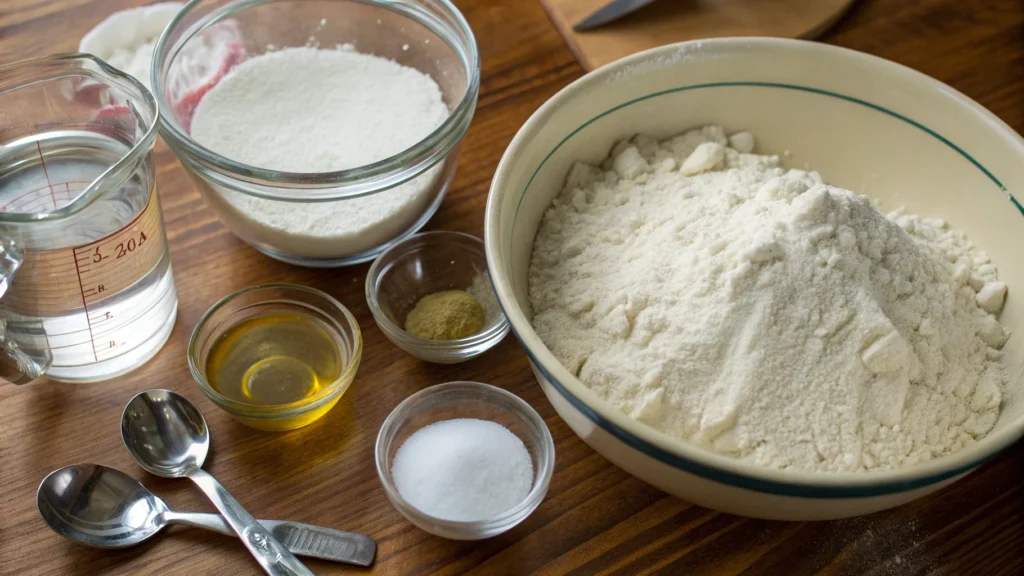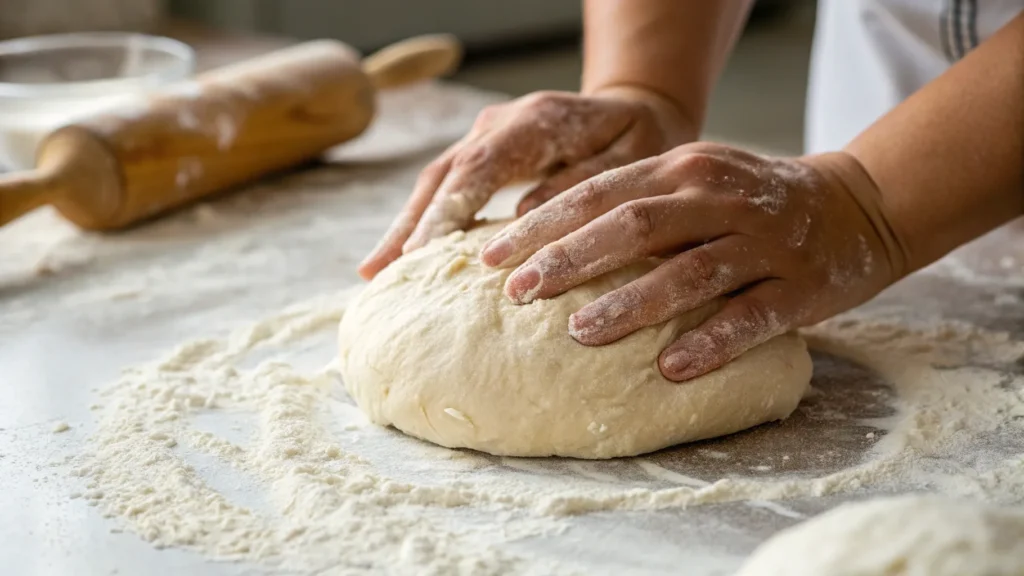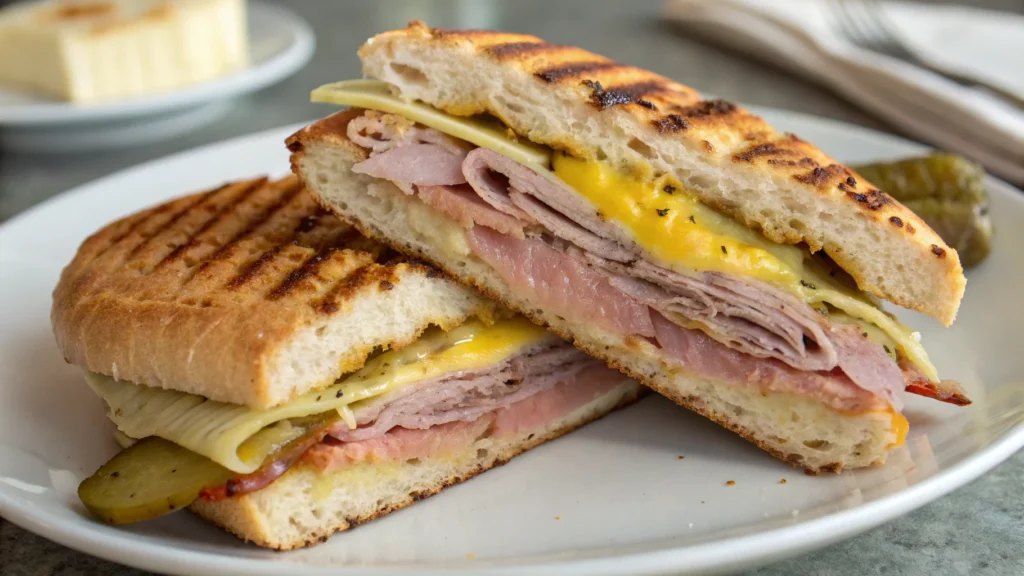Cuban bread recipe is more than just a baked good; it’s a cultural treasure steeped in history and tradition. Known for its crisp crust and soft, airy interior, this bread is a cornerstone of Cuban cuisine. Whether you’re crafting a classic Cuban sandwich or serving it alongside a hearty bowl of soup, Cuban bread brings a touch of authenticity and flavor to your table.
In this article, we’ll dive deep into everything you need to know about Cuban bread recipe, from its origins and unique characteristics to a step-by-step guide for making it at home. Along the way, we’ll explore common variations, answer FAQs, and share expert tips to ensure your bread turns out perfectly every time.
Table of Contents
Introduction to Cuban Bread Recipe
What is Cuban Bread?
Cuban bread recipe is a traditional white bread originating from Cuba but embraced globally for its delightful taste and texture. It is distinct due to its lean dough recipe, which uses lard or shortening to create its signature softness. Unlike many other types of bread, Cuban bread features a long, rectangular shape with a crispy crust and a characteristic split along the top.
Learn more about other unique bread recipes, like the Sweet Rice Recipe, to expand your culinary repertoire.
A Brief History of Cuban Bread Recipe
The history of Cuban bread recipe is tied closely to the Cuban immigrant communities in Florida, particularly in Tampa and Miami. Tampa’s Ybor City is often credited as the birthplace of Cuban bread in the United States, where bakers first began crafting the loaves in the early 20th century. Over time, Cuban bread recipe became synonymous with the iconic Cuban sandwich and gained popularity across the U.S.
For another cultural twist, explore Ground Turkey and Rice Recipes for healthy, flavorful options.
Why Cuban Bread is a Must-Try?
There’s nothing quite like the flavor and texture of freshly baked Cuban bread recipe. Its crispy crust provides a satisfying crunch, while the soft, fluffy interior is perfect for absorbing flavors. Whether you’re making sandwiches, toasting slices, or serving it plain, Cuban bread elevates any dish it accompanies.
Ingredients Needed for Cuban Bread
Essential Ingredients and Their Role
To create authentic Cuban bread recipe, you’ll need a few basic ingredients that work together to achieve its signature texture and flavor:
- Flour: All-purpose or bread flour is essential for structure. Bread flour, in particular, enhances the elasticity and chewiness.
- Yeast: Active dry yeast helps the dough rise and gives the bread its light texture.
- Water: Warm water activates the yeast and hydrates the dough.
- Salt: Enhances flavor and strengthens the gluten structure.
- Sugar: Adds a touch of sweetness and promotes a golden crust.
- Lard or Shortening: Provides the characteristic softness and a subtle richness unique to Cuban bread recipe.
Optional Additions for Unique Flavor
While traditional Cuban bread recipe is simple, some bakers like to add unique touches:
- Milk Powder: For a slightly creamier flavor.
- Malt Powder: Enhances the crust’s browning and flavor.
Where to Source Authentic Ingredients
- Supermarkets: Most ingredients can be found in your local grocery store.
- Specialty Shops: For authentic Cuban lard or high-quality flour, visit a Latin grocery store or online retailers.
- Homemade Alternatives: Can’t find lard? Substitute with softened butter or shortening.
Looking to experiment? Consider trying Passion Fruit Juice as a refreshing complement to your bread!

Step-by-Step Cuban Bread Recipe
Preparing the Dough: Mixing and Kneading
- Activate the Yeast: In a bowl, combine warm water (110°F/43°C), sugar, and yeast. Let it sit for 5–10 minutes until frothy.
- Combine Ingredients: In a large mixing bowl, combine flour, salt, and lard. Gradually add the yeast mixture while stirring.
- Knead the Dough: Transfer the mixture to a floured surface and knead for 8–10 minutes until smooth and elastic. Alternatively, use a stand mixer with a dough hook.
Shaping the Loaves
- Divide the dough into two equal portions.
- Roll each portion into a long, rectangular loaf shape, about 12 inches long.
- Place the loaves onto a baking sheet lined with parchment paper or a lightly greased baking mat.
Proofing the Dough for Perfect Texture
- Cover the loaves with a clean kitchen towel. Let them rise in a warm, draft-free location for 1–2 hours, or until doubled in size.
- Optional: Place a damp towel over the bread to keep it moist during proofing.
Baking to Golden Perfection
- Prepare the Oven: Preheat the oven to 375°F (190°C). Place a pan of hot water on the bottom rack to create steam.
- Make the Signature Slash: Use a sharp knife to make a deep, diagonal slash along the top of each loaf. This helps with expansion during baking.
- Bake the Loaves: Place the baking sheet in the oven and bake for 20–25 minutes, or until the bread is golden brown and sounds hollow when tapped.
- Cool the Bread: Allow the loaves to cool on a wire rack before slicing.
Want more baking inspiration? Check out the Mini Chocolate Chip Muffins recipe for a sweet treat!

Tips for Perfect Cuban Bread Recipe
Avoiding Common Baking Mistakes
- Measure Ingredients Precisely: Baking is a science, so use a kitchen scale for accuracy. Too much flour can make the bread dense.
- Check Yeast Freshness: Expired yeast won’t rise properly. Always test with warm water and sugar before adding to the dough.
- Don’t Overproof the Dough: Overproofing leads to collapsing loaves. The dough should double in size, not more.
Techniques for a Crispy Crust
- Use Steam: Adding a pan of water in the oven creates steam, which helps achieve a crusty exterior.
- Preheat Your Oven: A hot oven ensures the bread bakes evenly with a good rise.
- Cool the Bread on a Rack: Proper airflow prevents a soggy crust.
Getting the Soft, Airy Interior
- Use the Right Fat: Authentic lard gives Cuban bread its signature texture.
- Don’t Overwork the Dough: Knead just until smooth and elastic. Overworking can lead to a tough texture.
- Proper Proofing: Letting the dough rise fully ensures a light, airy crumb.
Variations of Cuban Bread
Tampa Cuban Bread vs. Miami Cuban Bread
- Tampa Cuban Bread: Includes a strip of palmetto leaf on top, a tradition that keeps the bread moist while baking.
- Miami Cuban Bread: Focuses on a slightly denser loaf, ideal for Cuban sandwiches.
Puerto Rican Bread vs. Cuban Bread
While similar in appearance, Puerto Rican bread (pan sobao) is sweeter and uses more shortening, creating a softer crust and a chewy interior. Cuban bread recipe is leaner with a more pronounced crust.
Modern Twists on Traditional Cuban Bread
- Whole Wheat Cuban Bread: A healthier take using whole wheat flour.
- Stuffed Cuban Bread: Fill the dough with ingredients like ham, cheese, or olives for a creative twist.
- Herbed Cuban Bread: Add garlic, rosemary, or other herbs for a flavorful variation.
For more creative bread ideas, take a look at the Chocolate Sourdough Bread recipe.
Uses for Cuban Bread
Cuban Sandwiches: A Classic Choice
The quintessential Cuban sandwich features layers of ham, roast pork, Swiss cheese, pickles, and mustard, pressed between slices of Cuban bread. Its crispy exterior and soft interior make it the perfect choice.
As a Side for Soups and Stews
Cuban bread recipe is excellent for dipping into hearty dishes like black bean soup or beef stew. Its crust prevents it from becoming too soggy while soaking up the flavors. Perfect for recipes like Marry Me Chicken Soup.
Creative Serving Ideas
- Breakfast Toast: Top slices with butter or guava jelly for a quick breakfast.
- Bread Pudding: Use stale Cuban bread for a rich, custard-like dessert.
- Croutons: Cube and toast leftover bread to make crispy croutons for salads.
Troubleshooting: Why Your Cuban Bread Might Be Dense
The Role of Proper Proofing
Proofing is crucial to achieving the airy texture Cuban bread recipe is known for. If the dough doesn’t double in size during proofing:
- The yeast may not have been activated properly.
- The environment might be too cold. Ideal proofing temperatures are between 75°F–85°F.
How to Avoid Overworking the Dough
Overkneading the dough can overdevelop the gluten, resulting in a dense texture. To avoid this:
- Knead just until the dough is smooth and slightly elastic.
- Perform the “windowpane test”: Stretch a small piece of dough. If it doesn’t tear and becomes thin enough to let light through, it’s ready.
Using the Right Flour and Yeast
The type of flour and yeast significantly impacts the final texture:
- Use bread flour for a stronger structure and better rise.
- Ensure yeast is fresh and active; test it by mixing with warm water and sugar. If it bubbles within 5–10 minutes, it’s good to use.
Cuban Bread FAQs
What Makes Cuban Bread Different?
Cuban bread recipe stands out for its light, airy texture, thin crispy crust, and the use of lard, which adds richness and softness.
What is the Closest Bread to Cuban Bread?
The closest bread to Cuban bread is Italian or French bread. However, these lack the unique flavor and texture imparted by lard.
What is the Difference Between Tampa Cuban Bread and Miami Cuban Bread?
Tampa Cuban bread recipe often includes a strip of palmetto leaf on top, while Miami’s version is simpler and denser, suited for Cuban sandwiches.
Is There a Difference Between Puerto Rican Bread and Cuban Bread?
Yes, Puerto Rican bread (pan sobao) is sweeter, softer, and chewier, while Cuban bread has a crisper crust and leaner flavor profile.
Why is My Cuban Bread Dense?
Dense Cuban bread can result from insufficient proofing, overkneading, or using the wrong type of flour.
What is Ybor Bread?
Ybor bread is a term used for the Cuban bread recipe traditionally baked in Ybor City, Tampa, where the bread gained popularity among Cuban immigrants.
For additional tips, explore Chicken Broccoli Rice Casserole for hearty meal inspiration.

Conclusion and Recipe Summary
Recap of Key Steps for Baking Cuban Bread
Baking Cuban bread at home brings an authentic taste of tradition to your kitchen. Whether served as part of a meal or on its own, this bread is sure to delight. Pair your freshly baked loaf with recipes like Sweet Rice Recipe for a complete culinary experience.
- Use fresh yeast and measure ingredients accurately.
- Allow the dough to proof properly for a light, airy texture.
- Bake with steam to create a crispy crust.
Encouragement to Try It at Home
Cuban bread is not only delicious but also versatile. Whether you’re making sandwiches, enjoying it with soup, or getting creative with recipes, this bread will become a favorite in your kitchen. Try this recipe today, and bring a taste of Cuban tradition to your table!


1 thought on “The Best Cuban Bread Recipe For Perfect Sandwiches”